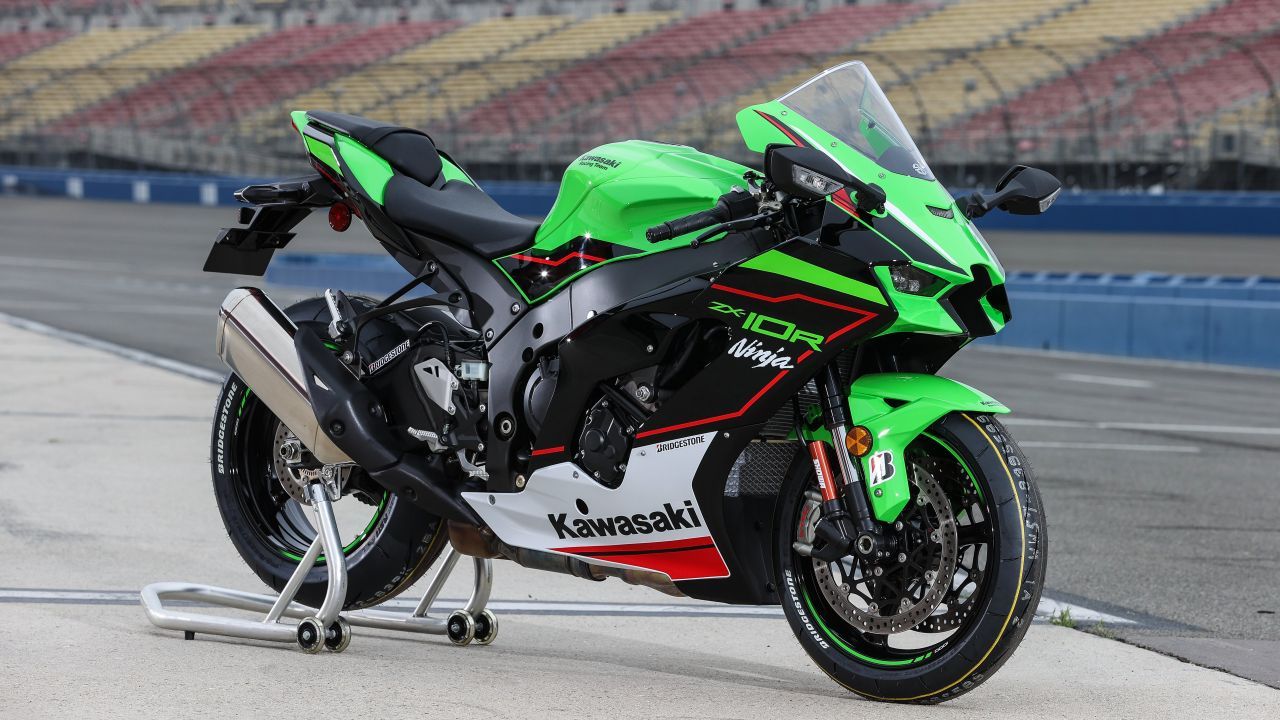BMW S1000RR vs Japanese Litre Class Superbikes: A Technical Comparison

When it comes to the realm of high-performance superbikes, the competition is fierce, with manufacturers constantly pushing boundaries to deliver the ultimate riding experience. In this comparison, we pit the BMW S1000RR against four formidable Japanese contenders: the Suzuki GSX-R1000R, Honda CBR1000RR-R, Yamaha YZF-R1, and Kawasaki Ninja ZX-10R. Let’s delve into the technicalities to discern their strengths and weaknesses.
Engine Performance:

BMW S1000RR: The S1000RR is propelled by a 999cc inline-four engine renowned for its robust power delivery and exhilarating performance. With innovations like ShiftCam technology, it offers a broad torque curve and exceptional top-end power, producing a staggering 205 horsepower in its latest iteration.

Suzuki GSX-R1000R:
Suzuki’s flagship superbike boasts a 999.8cc inline-four engine engineered for adrenaline-inducing acceleration. Equipped with Suzuki Racing Variable Valve Timing (SR-VVT) technology, it generates impressive low-end torque and a peak power output of around 202 horsepower, ensuring blistering straight-line speed.

Honda CBR1000RR-R:
The CBR1000RR-R is Honda’s track-focused marvel, featuring a compact yet potent 999cc inline-four powerplant. Engineered with MotoGP-derived technology, it achieves an astounding 214 horsepower, making it one of the most powerful production bikes available. Its Variable Valve Timing and Lift Electronic Control (VTEC) system optimize performance across the rev range.

Yamaha YZF-R1:
Yamaha’s YZF-R1 is synonymous with racing pedigree, thanks to its high-revving 998cc crossplane inline-four engine. Delivering a harmonious blend of low-end grunt and top-end rush, it produces approximately 200 horsepower. Yamaha’s Chip-Controlled Intake (YCC-I) and Intake and Exhaust Camshaft Control (YCC-T) systems enhance throttle response and power delivery.

Kawasaki Ninja ZX-10R:
The Ninja ZX-10R from Kawasaki is a formidable contender in the liter-class segment, powered by a 998cc inline-four engine that churns out impressive power figures. With technologies like Kawasaki’s Electronic Throttle Valves and Kawasaki Quick Shifter, it delivers exhilarating acceleration and a peak power output of around 200 horsepower.
Chassis and Handling:

BMW S1000RR:
The S1000RR features a lightweight aluminum frame and sophisticated electronic aids, including dynamic traction control, cornering ABS, and dynamic damping control. Its race-inspired geometry ensures razor-sharp handling and confidence-inspiring stability, whether on the track or the street.

Suzuki GSX-R1000R:
Suzuki’s superbike boasts a twin-spar aluminum frame designed for optimal rigidity and agility. Enhanced by advanced electronics such as Suzuki’s Motion Track Brake System and adjustable traction control, it offers precise handling and superb feedback, allowing riders to exploit its capabilities with ease.

Honda CBR1000RR-R:
With a focus on aerodynamics and mass centralization, the CBR1000RR-R features a lightweight chassis and race-derived suspension components. Its advanced electronic suite includes Honda Selectable Torque Control, wheelie control, and multiple riding modes, ensuring exceptional stability and agility under varying conditions.

Yamaha YZF-R1:
Yamaha’s YZF-R1 boasts a Deltabox aluminum frame engineered for optimal balance and responsiveness. Equipped with an advanced electronic package comprising slide control, launch control, and banking-sensitive traction control, it offers superb agility and confidence-inspiring handling, whether carving through corners or blasting down straights.

Kawasaki Ninja ZX-10R:
The Ninja ZX-10R features a highly responsive chassis with a focus on agility and stability. Its lightweight aluminum perimeter frame and Showa Balance Free Front Forks contribute to precise handling and cornering prowess. Kawasaki’s electronic aids, including Kawasaki Launch Control Mode (KLCM) and Kawasaki Intelligent Braking System (KIBS), enhance overall performance and safety.
Electronics and Technology:

BMW S1000RR:
The S1000RR comes equipped with a suite of cutting-edge electronics, including multiple riding modes, launch control, and an optional M Package with GPS lap timer and carbon fiber wheels. Its 6-axis IMU ensures precise dynamic performance monitoring, allowing riders to extract maximum performance with confidence.

Suzuki GSX-R1000R:
Suzuki’s flagship superbike features a comprehensive electronics package, including a bi-directional quick shifter, lean angle-sensitive ABS, and an adjustable ride-by-wire throttle system. Its multi-mode traction control system and customizable engine maps cater to a wide range of riding styles and conditions.

Honda CBR1000RR-R:
The CBR1000RR-R boasts state-of-the-art electronics, including a Bosch 6-axis IMU, wheelie control, and a quick shifter for seamless gear changes. Its TFT display offers intuitive access to various rider aids, while the optional Honda Smart Key adds convenience to the ownership experience.

Yamaha YZF-R1:
Yamaha’s flagship superbike is packed with cutting-edge technology, including a comprehensive suite of ride-by-wire throttle modes, slide control, and lift control. Its Communication Control Unit (CCU) enables wireless connectivity for data logging and performance analysis, catering to the needs of both professional racers and performance enthusiasts alike.

Kawasaki Ninja ZX-10R:
The Ninja ZX-10R is equipped with a sophisticated electronics package, including Kawasaki’s Sport-Kawasaki Traction Control (S-KTRC) and Kawasaki Corner Management Function (KCMF) for optimized cornering performance. Its TFT color instrumentation provides riders with essential information at a glance, while features like Kawasaki Quick Shifter enable seamless gear changes for enhanced riding dynamics.
Conclusion:
In the realm of liter-class superbikes, each contender brings its own unique blend of performance, handling, and technology to the table. The BMW S1000RR impresses with its refined engineering and versatile capabilities, while the Japanese offerings from Suzuki, Honda, Yamaha, and Kawasaki showcase a relentless pursuit of performance and innovation. Ultimately, the choice between these superbikes boils down to individual preferences and riding priorities, whether it be track dominance, street prowess, or technological sophistication.





